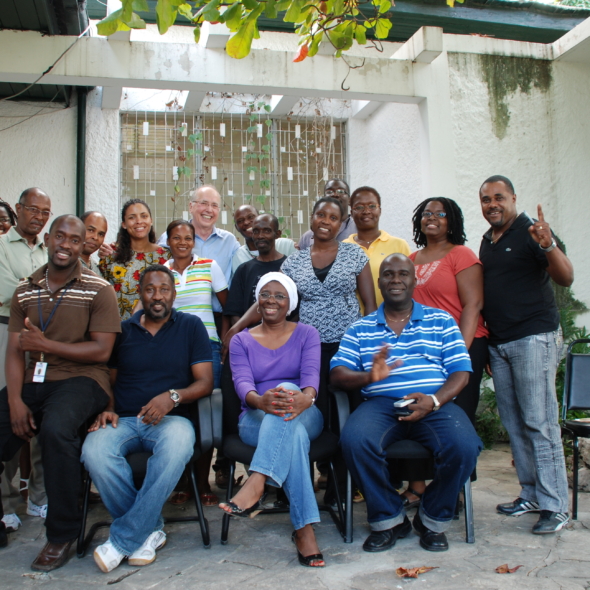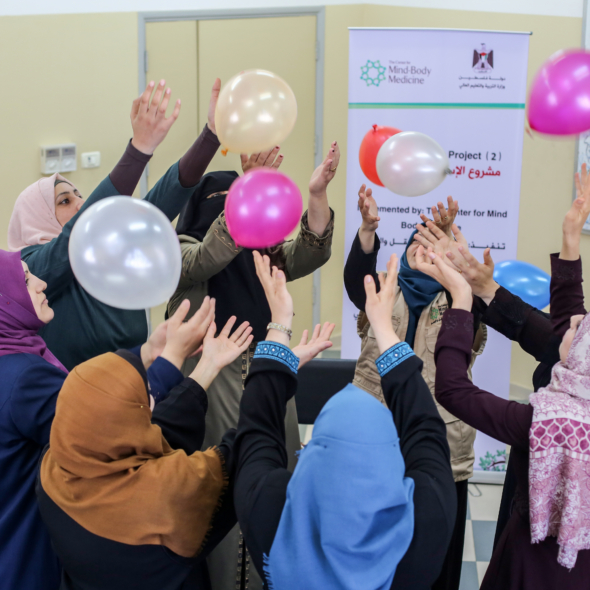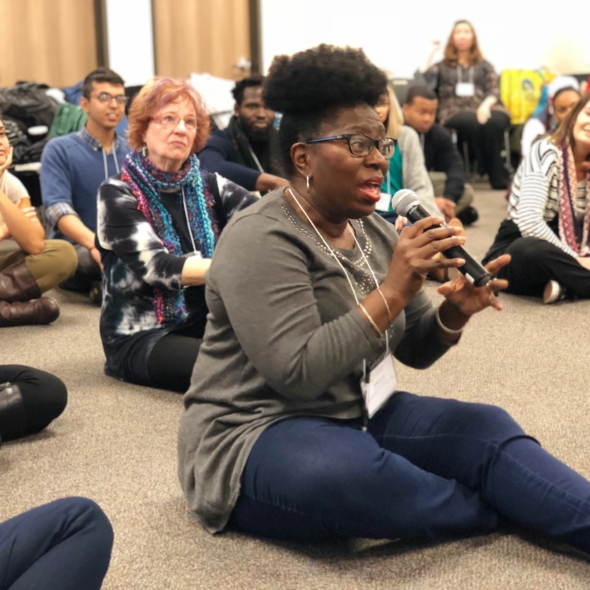The Washington, DC based Center for Mind-Body Medicine (CMBM) announced today the publication of a landmark study on the use of its comprehensive, non-drug model to treat posttraumatic stress disorder (PTSD) in war traumatized children. The study, “Treatment of Posttraumatic Stress Disorder in Post-War Kosovar Adolescents Using Mind-Body Skills Groups: A Randomized Controlled Trial,” which was published today online in the Journal of Clinical Psychiatry is the first randomized controlled trial (RCT) ever of any intervention with war traumatized children. It is also the first RCT of a successful, comprehensive mind-body approach with any traumatized population.
The study demonstrates that the Center’s groundbreaking model can be used to produce highly significant and lasting changes in levels of stress, flashbacks, nightmares, and symptoms of withdrawal and numbing in highly traumatized children – those who lived in an area of Kosovo where in 1999 90% of the homes were burned and bombed and 20% of the children lost one or both parents.
The CMBM approach includes self-expression in words, drawings, and movement and mind-body techniques (including meditation, guided imagery, biofeedback and yoga) was offered to these children over 12 sessions in an educational, supportive small group setting. This intervention produced an approximate 80% reduction in PTSD in the treatment groups, much of which was maintained at 3 month follow-up. This is the same model that CMBM’s founder and director, James S. Gordon, MD, describes in detail in his new book, Unstuck: Your Guide to the Seven Stage Journey Out of Depression.
“This RCT,” Dr. Gordon, the lead author, says, “is important because it provides scientific evidence for the efficacy of a model that has been taught to almost 3,000 health and mental health professionals and educators worldwide. We’ve used this small group model to give tens of thousands of children and adults practical tools that help them to feel better quickly, and we’ve taught them to use their intuition and imagination to solve problems that had seemed overwhelming. We help traumatized people around the world to draw on strengths they may have forgotten they have and we offer them a ‘safe place’ in which they can share their pain with others who have suffered as they have.”
“This model is educational, non-stigmatizing, and powerfully effective. It can be easily taught and can be used by people of all ages on their own,” Dr. Gordon explains. “It’s highly acceptable to populations which do not want to be given medication, those without access to a doctor or therapist, and those who are in psychotherapy.”
This model, which Dr. Gordon presents in a step-by-step self-help format in Unstuck, is currently being used by CMBM with war traumatized populations in Israel and Gaza as well as in post-Katrina southern Louisiana. It is widely used with anxious and depressed people and those with chronic illness in the US, and has already been incorporated as a stress reduction program for students in a dozen US medical schools.
The CMBM model is also of increasing interest to the US Department of Defense and the Veterans Administration. “The military,” Dr. Gordon says, “understands the breadth and depth of the psychological crisis (as many as 300,000 returning veterans are expected to have posttraumatic stress disorder or major depressive disorder, and another 320,000 will have been made vulnerable to these conditions by traumatic brain injury). The military’s leadership is committed to finding evidence-based approaches, like the one taught by The Center for Mind-Body Medicine, that can make a difference for the individual veteran and his/her family, an approach that can be taught to the large numbers of professionals and peer counselors who serve them.” More than 100 health and mental health professionals who work with the military are expected at the next CMBM training in mind-body medicine on October 25-29 in Minneapolis, and many more are expressing interest in learning and using the CMBM model.


